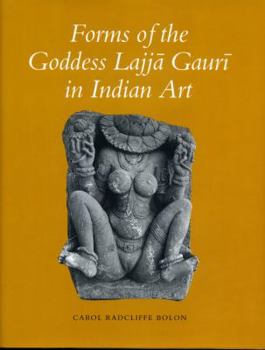Forms of the Goddess Lajj Gaur in Indian Art
Striking images of a certain Indian goddess have been variously referred to as the "shameless woman" the "nude squatting goddess," the "mother goddess," or, because her historical name remains unknown, more than twenty-five names, among them Aditi, Lajja Gauri, Renuka, and Nagna Kabambdha. The best-known images of this goddess have a female torso and a lotus flower in place of a head, while her legs are bent up at the knees and drawn up to each side in a position that has been described as one of "giving birth" or "self-display." This type of goddess figure is explained as part of a long, highly sophisticated tradition of expressing fertility and well-being in Indian art. The artists creating images of Lajja Gauri drew on various ancient symbols of fortune, fertility, and life-force to communicate her power through their rich heritage of meanings. As these historical-religious symbols and images were constantly reused and reincorporated, they formed a new and enriched religious context. In the process of recycling they became empowered cultural metaphors, visual morphemes in the language of Indian art. Because there are no texts to explain the figure, the study proceeds from the basis of the objects to derive their meaning. Carol Bolon charts the changes in the goddess's form over a period of more than four centuries, including its possible adoption from tribal worship into Hindu temples, and brings a new appreciation of Lajja Gauri's rich symbolic meanings and cultural context.
Format:Library Binding
Language:English
ISBN:0271007613
ISBN13:9780271007618
Release Date:March 1992
Publisher:Penn State University Press
Length:178 Pages
Weight:2.25 lbs.
Dimensions:0.8" x 8.8" x 11.1"
Customer Reviews
0 rating





